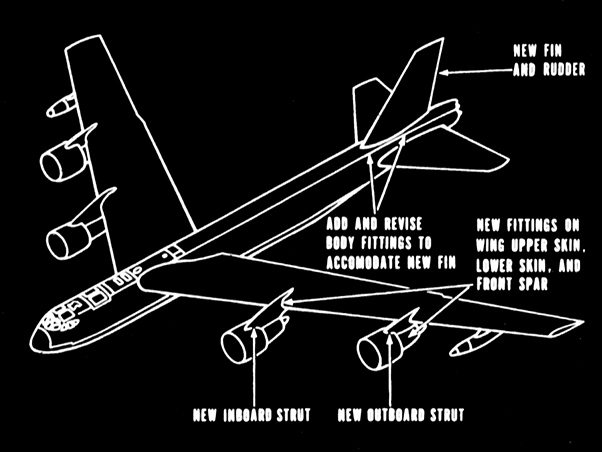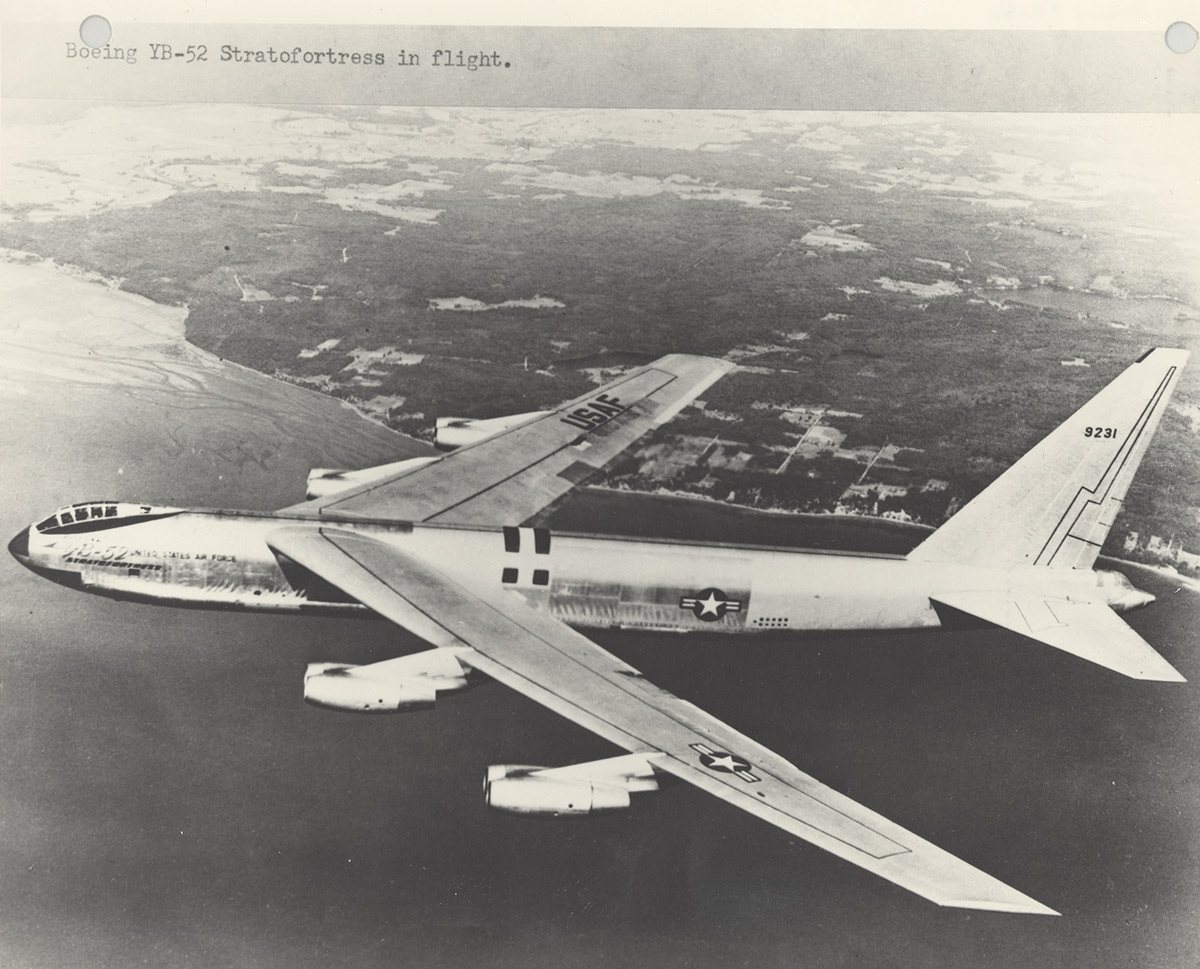The B-1 and B-2 pilots will be brought home from the boneyard in the B-52 Stratofortress, according to an old joke that circulates around the bomber fleet. That could be partially true given the current suggestions to re-engine the Boeing B-52 fleet
The following article originally titled History in Two: New Power for an Old Soldier—Re-engining the B-52 Stratofortress, is written By Tony R. Landis, Air Force Materiel Command History Office.
The B-1 and B-2 pilots will be brought home from the boneyard in the B-52 Stratofortress, according to an old joke that circulates around the bomber fleet. That could be partially true given the current suggestions to re-engine the Boeing B-52 fleet. Nearly all of the airplanes created to replace it have outlived this storied aircraft. This brief history will look back on many of the suggestions made to keep the B-52 fleet updated with new engines during the course of its existence.

On August 5, 1954, the first B-52A in production made its first flight. The first B-52Bs to enter service soon after. The bomber initially felt underpowered despite having eight Pratt & Whitney J57 engines. The aircraft had poor performance with a full weapons load on a hot day, even with the addition of water injection for extra thrust during takeoff.
Early in 1956, in order to improve performance, Major General Al Boyd, Deputy Commander for Systems, Air Research & Development Command (ARDC), asked if it was possible to replace the two J57 engines with a single after-burning J75 engine on each of the outboard pylons. Between November 1957 and August 1958, the prototype XB-52 flew a number of times in this configuration, collecting over 140 flight hours. Despite the “substantial performance improvement” claimed in the final study, the configuration was not used for the fleet.

On October 26, 1962, the final B-52 was delivered to the Air Force. This final H-model variant now used Pratt & Whitney TF33 turbofan engines, which performed significantly better than the previous J57s.
In 1969, Boeing started a study to re-engine the B-52 fleet, and again in August 1971, the Air Force and Boeing conducted a more thorough research on replacing the engines with High Bypass Ratio Turbofan engines on all B-52G & H variants. Boeing investigated two concepts: one that used two engines on a single inboard pylon and the other that used one turbofan on each of the four wing pylons. Members of Congress proposed the B-52I as a replacement in 1975, when the highly contested Rockwell B-1 program was in full force. Once more, it was not accepted.

In the 1980s, Pratt & Whitney conducted a thorough study on the possibility of swapping out the eight TF33 engines for four PW2000 (F117) engines. This notion never took off since it was anticipated that the B-1 and B-2 would take the role of the B-52 by the mid-1990s. After an incident involving B-52H #60 -0054 in which a double engine failure resulted in engines #3 & #4 leaving the aircraft while it was in flight, the problem was revisited in January 1996. In this instance, Rolls-Royce and Boeing collaborated to suggest using engines identical to the Rolls-Royce RB211-535 used on commercial 757 aircraft. The plan was again rejected by the Air Force.
Another USAF/Boeing study on re-engining the fleet found that it would cost about $4.5 billion to complete but would result in cost savings of almost $15 billion over the life of the bomber in addition to increasing the combat range by 22% and reducing greenhouse gas emissions. By 2003, the cost of overhauling the oldnTF33 engines had tripled. The Pratt & Whitney PW2000, Roll-Royce RB211-535, and CFM International CFM56 (F108) engine competition may receive a portion of its funding through the Energy Savings Performance Act, which allows the federal government to collaborate with private sector on energy-saving technologies. Even though a lot of work went into this proposal, nothing ended up being the engineering effort.
After the Air Force determined that the B-52 will remain in service through at least 2040, when it intends to retire all B-1B and B-2 bombers, a new proposal to re-engine the 76-plane fleet to fly alongside the upcoming Northrop B-21 Raider was made in 2018. The Commercial Engine Replacement Program (CERP), the most recent endeavor, aims to equip the legendary aircraft with business jet engines that are currently in production off-the-shelf. The goal is lower greenhouse gas emissions, easier maintenance using the most advanced onboard diagnostic technology, and fuel efficiency gains of 20 to 30 percent with a 40 percent improvement in range.
For the multi-year deal to buy more than 600 new engines, Pratt & Whitney, Rolls-Royce, and General Electric are expected to compete. Boeing will serve as the systems integrator. This newest endeavor may offer the best chance to keep this historic aircraft flying for at least another 25 years, demonstrating that old soldiers never die, they merely fade away. One day a new aircraft will be designed to replace this legendary aircraft.
Photo by U.S. Air Force

